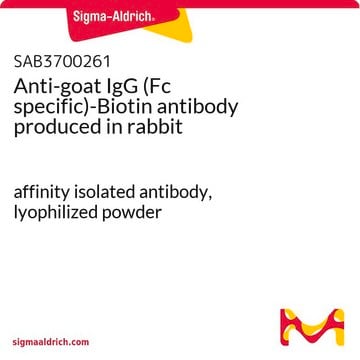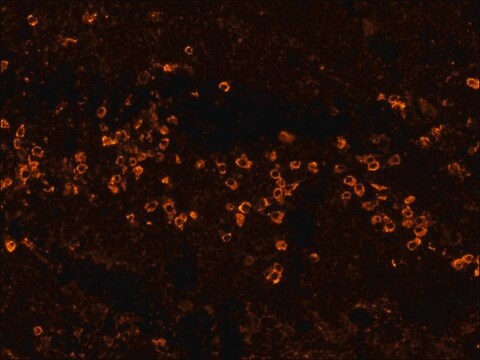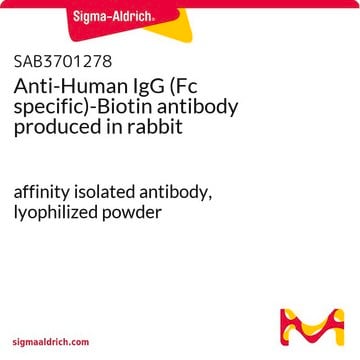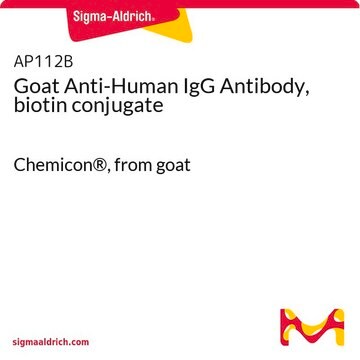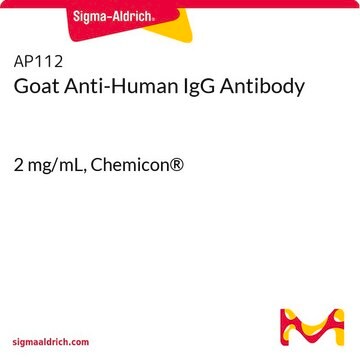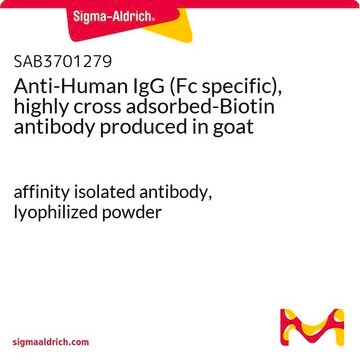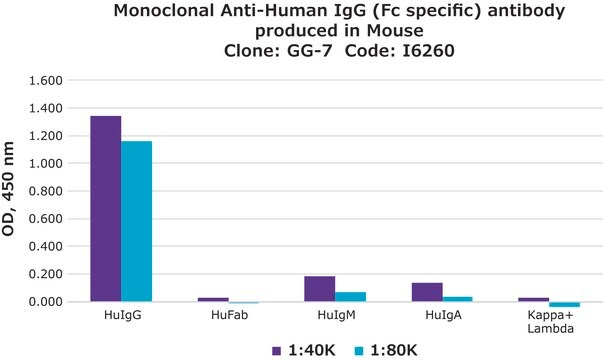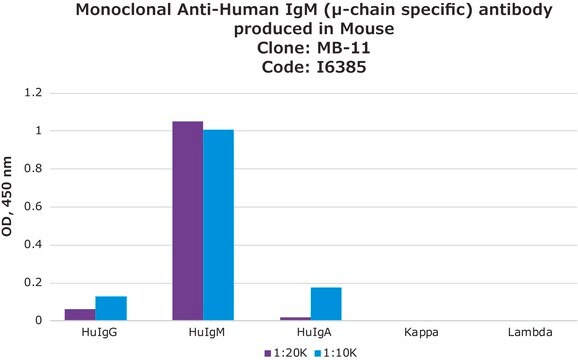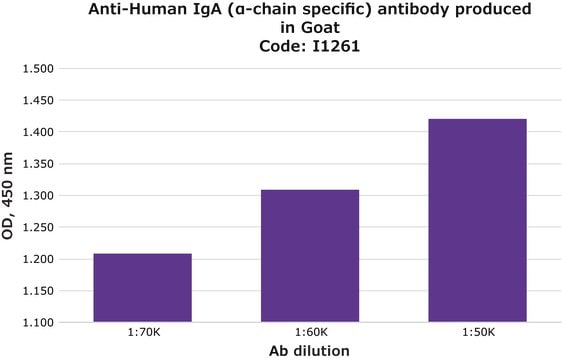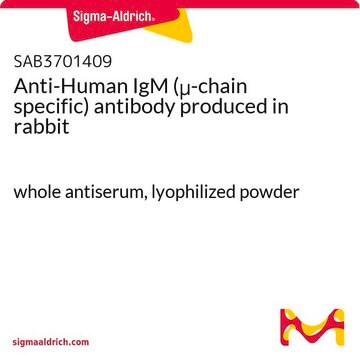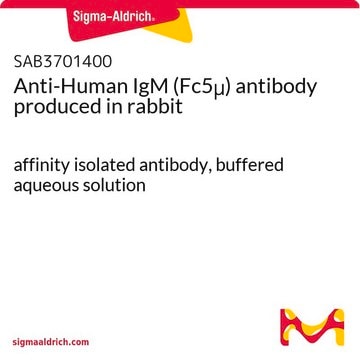추천 제품
생물학적 소스
rabbit
Quality Level
결합
unconjugated
항체 형태
affinity isolated antibody
항체 생산 유형
secondary antibodies
클론
polyclonal
양식
buffered aqueous solution
종 반응성
human
농도
3.0 mg/mL
기술
immunohistochemistry: suitable
indirect ELISA: suitable
western blot: suitable
배송 상태
wet ice
저장 온도
2-8°C
타겟 번역 후 변형
unmodified
관련 카테고리
일반 설명
Immunoglobulin G (IgG) belongs to the immunoglobulin family. It is widely expressed and consists of a gamma (γ) heavy chain in the constant (C) region. IgG is a monomer with a molecular weight of about 150 kDa. The structure of IgG constitutes two identical heavy chains and two identical light chains with molecular weight of 50 kDa and 25 kDa respectively. The primary structure of this antibody also contains disulfide bonds involved in linking the two heavy chains, linking the heavy and light chains and resides inside the chains. IgG is further subdivided into four classes namely, IgG1, IgG2, IgG3, and IgG4 with different heavy chains, named γ1, γ2, γ3, and γ4, respectively. Limited digestion using papain cleaves the antibody into three fragments, two of which are identical and contain the antigen-binding activity. The third fragment does not possess antigen-binding activity and is known as fragment crystallizable (Fc). It interacts with cells and effector molecules. The Fc fragment contains the CH2 and CH3 domains of the antibody molecule. Maternal IgG is the only antibody transported across the placenta to the fetus. It passively immunizes the infants.
특이성
This product was prepared from monospecific antiserum by immunoaffinity chromatography using Human IgG coupled to agarose beads followed by solid phase adsorption(s) to remove any unwanted reactivities. Assay by immunoelectrophoresis resulted in a single precipitin arc against Anti-Rabbit Serum, Human IgG, Human IgG F(c) and Human Serum. No reaction was observed against Human IgG F(ab′)2.
면역원
Human IgG F(c) fragment
애플리케이션
Anti-Human IgG (Fc specific) antibody produced in rabbit has been used as a control in cysteine-rich angiogenic inducer 61 (CYR61) blocking experiment.
물리적 특성
Antibody format: IgG
물리적 형태
Supplied in 0.02 M Potassium Phosphate, 0.15 M Sodium Chloride, pH 7.2
면책조항
Unless otherwise stated in our catalog or other company documentation accompanying the product(s), our products are intended for research use only and are not to be used for any other purpose, which includes but is not limited to, unauthorized commercial uses, in vitro diagnostic uses, ex vivo or in vivo therapeutic uses or any type of consumption or application to humans or animals.
적합한 제품을 찾을 수 없으신가요?
당사의 제품 선택기 도구.을(를) 시도해 보세요.
Storage Class Code
10 - Combustible liquids
Flash Point (°F)
Not applicable
Flash Point (°C)
Not applicable
이미 열람한 고객
The structure of a typical antibody molecule
Immunobiology: The Immune System in Health and Disease (2001)
The matricellular protein CYR61 promotes breast cancer lung metastasis by facilitating tumor cell extravasation and suppressing anoikis
Yu-Ting H et al.
Oncotarget, 8(6), 9200-9200 (2017)
Yu-Ting Huang et al.
Oncotarget, 8(6), 9200-9215 (2016-12-03)
Matricellular proteins play multiple roles in primary tumor growth, local invasion and tumor angiogenesis. However, their contribution to metastasis and the putative mechanisms involved are less well characterized. In ER-negative human breast cancer, elevated expression levels of the matricellular protein
Human placental Fc receptors and the transmission of antibodies from mother to fetus.
Simister NE and Story CM
Journal of Reproductive Immunology, 37(1), 1-23 (1997)
Antibody structure, instability, and formulation.
Wang W
Journal of Pharmaceutical Sciences, 96(1), 1-26 (2007)
자사의 과학자팀은 생명 과학, 재료 과학, 화학 합성, 크로마토그래피, 분석 및 기타 많은 영역을 포함한 모든 과학 분야에 경험이 있습니다..
고객지원팀으로 연락바랍니다.
